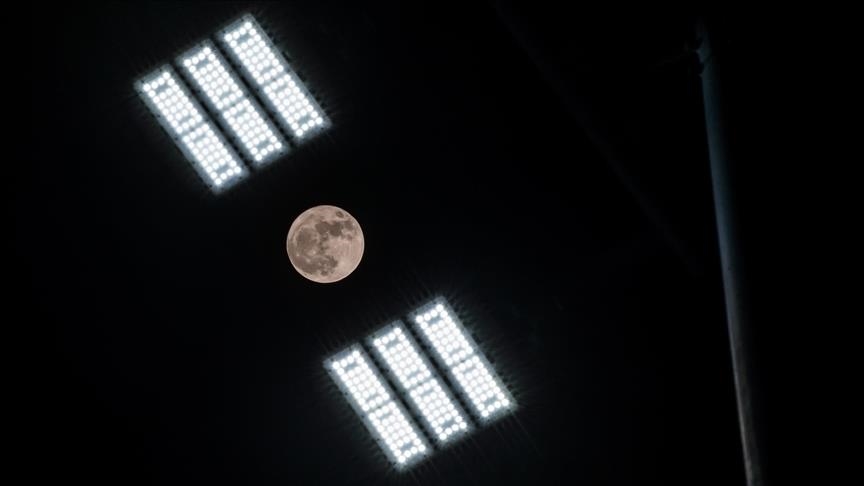ANKARA
Since the first person walked on the Moon in 1969, many missions have been carried out by different countries and space agencies to explore beyond the Earth.
On July 21, 1969, Apollo 11, carrying a total of 12 astronauts, landed on the lunar surface. On this famous expedition, Neil Armstrong became the first human to set foot on the Moon.
The Soviet Union aimed to take colorful photographs of the Earth and the Moon from many different angles with the Zond 7, which was launched to the Moon in 1969.
Venera 7 was one of the spacecraft launched by the Soviet Union to Venus in August 1970. The mission’s purpose was to provide data from Venus’s atmosphere and it became the first spacecraft to stream data to Earth after landing on another planet.
The first robotic research vehicle Luna 16, which was launched on Sept. 12, 1970, by the Soviet Union and landed on the Moon, also brought a sample from the Moon to Earth.
First station in space
Salyut 1 was the world’s first space station launched into low Earth orbit by the Soviet Union on April 19, 1971. After this attempt, NASA’s Skylab space station in orbit was used for astronauts and scientists to work on Earth investigating the effects of space flights on the human body. The first American space station Skylab 3 crashed unexpectedly in rural Australia in 1981.
NASA’s Pioneer 10 was launched on March 2, 1972 and passed by Jupiter, becoming the first spacecraft to visit this planet.
The US sent the Mariner series to Mercury, Venus, and Mars between 1962-1973. “Mariner 9” became the first vehicle to orbit Mars and explore volcanoes and grand canyons on the planet.
Viking 1 and 2 became the first spacecraft to land on the surface of Mars in 1976, with a mission conducted by NASA.
NASA’s Voyager 1 and 2 spacecraft were launched in 1977 and took advantage of a rare planetary alignment that allowed it to pass near Uranus in 1986 and Neptune in 1989. Both participated in explorations of Jupiter and Saturn. They still continue to provide information to Earth.
Japan launches spacecraft for first time other than US, Soviet Union
Sakigake, known before launch as MS-T5, was Japan’s first interplanetary spacecraft, and the first deep space probe to be launched by any country other than the US or the Soviet Union.
Giotto, which was Europe’s first deep space mission, was launched on July 2, 1985. The spacecraft was intended to pass by Halley’s comet to photograph it.
Launched by NASA into Venus orbit on May 4, 1989, Magellan is considered one of the space agency’s most successful deep space missions, as it captured images of the entire surface of Venus.
Nozomi was Japan’s first Mars explorer and its main mission was to research on interaction between Martian upper atmosphere and solar wind. Despite not accomplishing its primary mission, Nozomi provided important data from its suite of scientific instruments.
NASA’s Stardust was the first spacecraft to return a cometary sample and extraterrestrial material from outside the orbit of the Moon to Earth. In 2004, the Stardust made a close flyby of comet Wild-2, collecting comet and interstellar dust in a substance called aerogel.
China’s first Moon mission: Chang’e
Chang’e 1, which was an uncrewed Chinese lunar-orbiting spacecraft, launched on Oct. 24, 2007.
India’s Chandrayaan-1 also played an important role in the country’s first deep space mission and the discovery of water molecules on the Moon.
Danuri, South Korea’s first lunar mission, was launched on the Moon on Aug. 4, 2022.
Lunar IceCube is a NASA nanosatellite orbiter mission to prospect, locate, and estimate the amount and composition of water ice deposits on the Moon for future exploitation by robots or humans.
NASA’s Lunar Flashlight, launched on Dec. 11, 2022, will also be used to detect ice in dark regions near the Moon’s south pole.
International Space Station
The construction of the International Space Station (ISS), which is the largest modular space station in low Earth orbit, began in 1998. The ISS provides a testing ground for science and the study of human health on long-duration missions. The station has so far been visited by astronauts, cosmonauts, and space tourists from 17 countries.
NASA aims to return humans to the Moon in the 2020s through the Artemis program with international partners.
Space telescopes
The Kepler space telescope is a disused space telescope launched by NASA in 2009 to discover Earth-sized planets orbiting other stars.
The NASA Hubble Space Telescope is a project of international cooperation between NASA and the European Space Agency (ESA). Hubble was launched in 1990, but its main mirror had been ground incorrectly, and the optics were corrected to their intended quality by a servicing mission in 1993. Hubble is still active and the source of many discoveries as well as confirming the acceleration of the universe.
The James Webb Space Telescope (JWST) was also launched in 2021 to explore previously formed galaxies and the history of the universe. JWST’s notable discoveries include many stars, exoplanets, and young galaxies.
Mars survey programs
As part of the Mars Rover program, some NASA spacecraft have found evidence of ancient water on the surface of Mars. Sojourner, which was the first rover to rove on Mars, reached the surface in 1996 when the spacecraft Pathfinder landed on the planet.
NASA’s Mars Exploration Rover mission was a robotic space mission involving two Mars rovers, Spirit and Opportunity, exploring the planet Mars. It began in 2003 with the launch of the two rovers to explore the Martian surface and geology; both landed on Mars at separate locations in January 2004.
Curiosity, a car-sized Mars rover, began its mission to Mars in 2012. Perseverance, which is the most sophisticated robotic geologist ever made, landed on Feb. 18, 2021.

